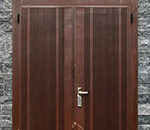Photography and printing are two very different things. Although they are closely related in how they depend on one another, they take two very different sets of knowledge. Just because you can take amazing photos, doesn’t mean you can make amazing prints, and vice versa. In this video, Robert Rodriguez Jr. explains many of the technical aspects and forethought you should consider when thinking about printing your images:
Factors to Consider Before Printing:
- Quality of the Photo. Not all photos are good for printing. There are many things to look at when deciding whether an image is print worthy. These include the sharpness, noisiness, amount of color information, and even the composition and content.
- Resolution. Resolution is not the most important thing when taking photos for internet use or small prints, but if you’re thinking about making large prints, then resolution is very important. It is basically a limitation on the size of your image/print. This is where megapixels actually matter. If you know you’re going to be printing an image, use the largest file size possible and shoot in RAW.
- Material and Ink. The quality and texture of your printing material can make a big impact on the final look on your image, as can the ink you use. I say materials instead of paper because, while there is a large variety of different papers, you can also have your photo printed on canvas, plastic boards, metal, or even wood.
- Print Permanence. How long do you want your prints to last? Paper quality, ink, and environmental factors can all affect a print’s lifespan. Don’t store photos in hot or humid areas and watch out for other factors, like ozone, that can degrade print quality.
- Technical Aspects. There are many technical concerns when creating a physical print: Bit depth, color profiles, color space, DPI, etc. These can all be very confusing at first, but if you want an optimal print, you’ll either need to know how these things work or find someone else who does.

Robert Rodriguez Jr explains many of the technical details of printing including the confusion between dpi and ppi
“Printing affects and motivates and inspires me in the field because, even when I’m composing an image in the field and setting it up, I’m thinking about what the final print is going to be and look like.”
Like This Article?
Don't Miss The Next One!
Join over 100,000 photographers of all experience levels who receive our free photography tips and articles to stay current:






Some useful tips, thanks for sharing them
Fantastic idea. Certainly beats the traditional framed photography and paintings.
I want to learn photo rendering as I am landscape architect